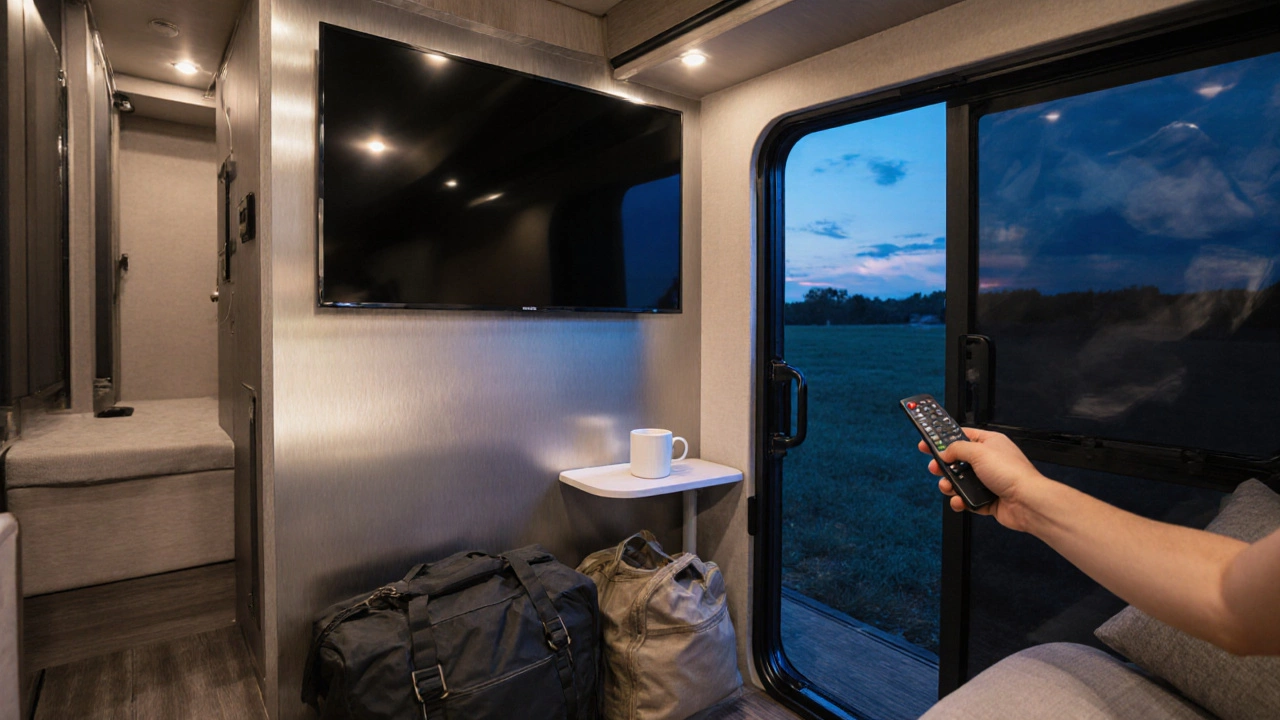RV TV Installation: How to Set Up Your Motorhome Entertainment
When working with RV TV installation, the process of fitting a television inside a motorhome or camper van. Also known as motorhome TV fit‑out, it turns your travel vehicle into a moving living room. RV TV installation is more than just plugging a screen in – you need the right power, secure mounting, and a reliable signal source.
Key components you’ll need
A common choice for motorhome entertainment is a 12‑volt TV, a television designed to run directly from a low‑voltage DC source. These units are built to handle the vibrations and limited space of a camper, and they usually come with built‑in HDMI or USB ports for easy connectivity. Because they run at 12 V, they can hook straight into your vehicle’s power system without a bulky transformer.
The heart of any RV power setup is the motorhome battery, a deep‑cycle battery that stores energy for lights, appliances, and electronics. Battery capacity, measured in amp‑hours, dictates how long you can watch a movie before recharging. A 100 Ah battery, for example, can theoretically power a 12‑V TV drawing 5 A for about 20 hours, assuming no other loads.
Most 12‑volt TVs still need a stable voltage, especially when the engine is off. That’s where a power inverter, a device that converts DC battery power to clean AC power comes in handy. An inverter sized at 300 W will comfortably run a typical 30‑inch 12‑V TV and keep the picture bright even when the battery voltage drops a bit. Choosing a pure‑sine wave inverter avoids the humming noise that cheap modified‑sine units can cause.
Securely mounting the screen is critical for safety and picture quality. A sturdy TV mounting bracket, preferably one with a tilting arm, lets you angle the display for glare‑free viewing while the vehicle is moving. Position the bracket near the cab or lounge area, run the power cable behind the wall panels, and use zip ties or conduit to keep wires tidy and out of the way of foot traffic.
Finally, think about signal sources. An external antenna, satellite dish, or a simple HDMI input from a portable media player can feed your TV. Antenna placement on the roof, combined with a low‑loss coax cable, gives you over‑the‑air channels without a subscription. If you prefer streaming, a 4G/5G mobile hotspot paired with a router provides reliable internet for services like Netflix or Disney+.
Putting all these pieces together means you’ll have a reliable, low‑maintenance entertainment system that works wherever the road takes you. In the list below you’ll find articles that dive deeper into each of these topics – from battery sizing tips to step‑by‑step wiring guides – so you can start watching your favorite shows on the go with confidence.
Can a Regular TV Run in Your Motorhome? Practical Answers & Tips
Learn if a regular flat‑screen TV can run in a motorhome, covering power needs, wiring steps, common issues and when to choose a 12‑V RV TV.
